微观经济学英文课件.
- 格式:ppt
- 大小:197.00 KB
- 文档页数:23
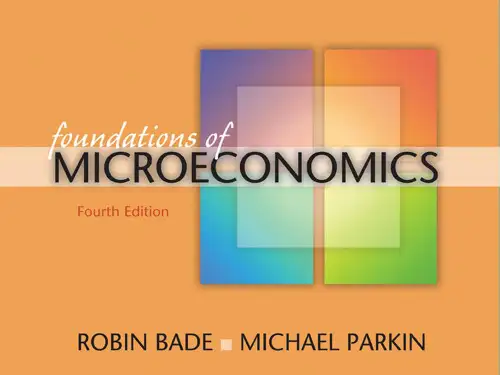
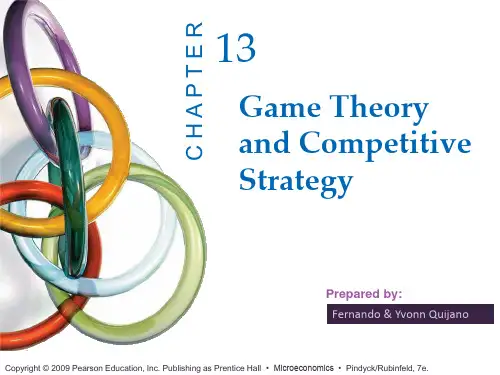
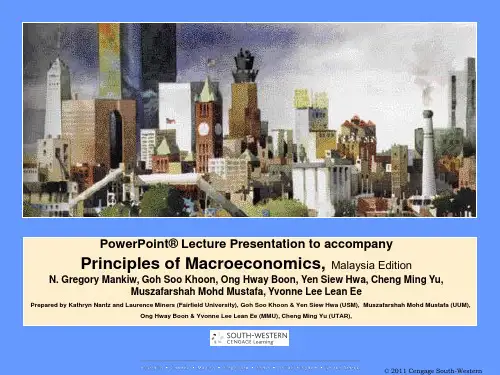
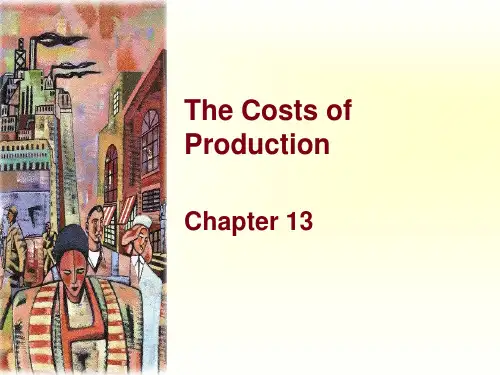
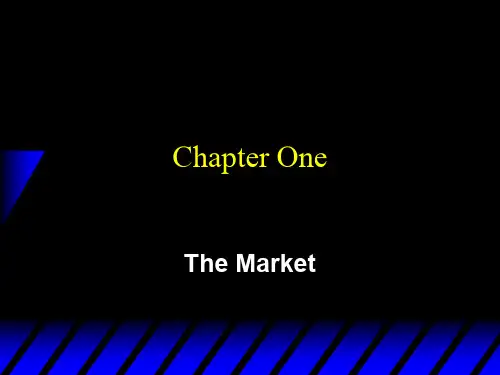
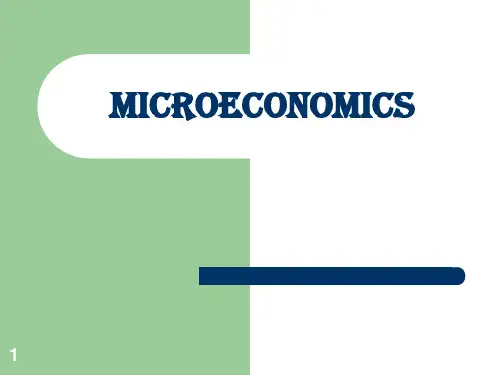
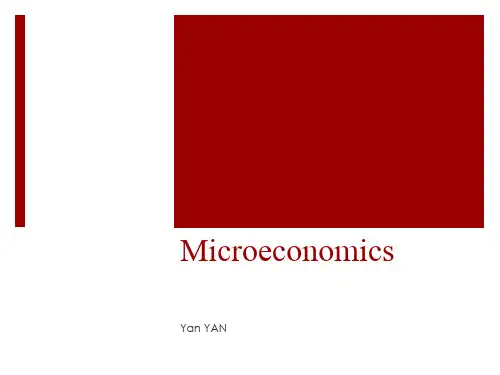
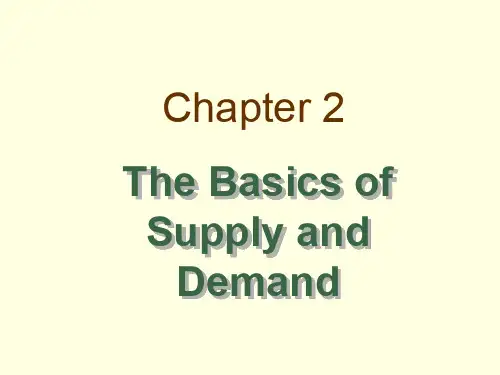
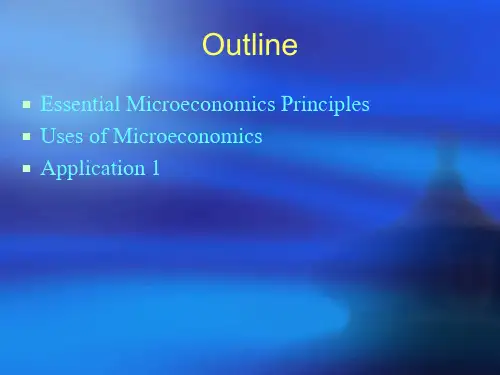
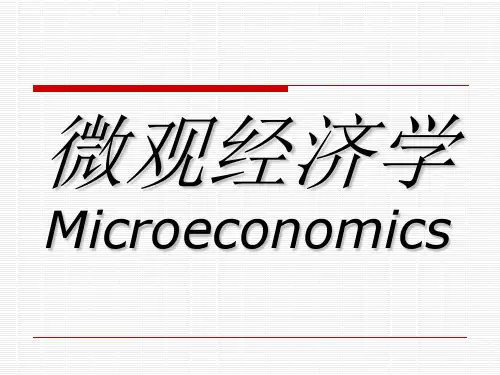
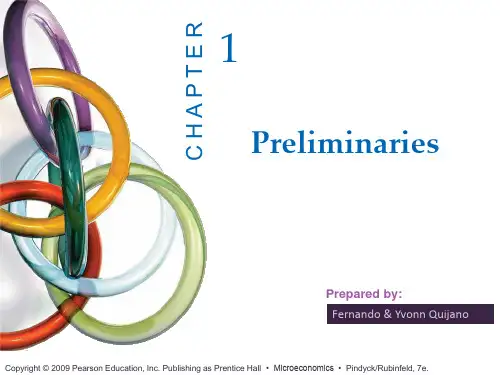
Chapter1:Key conceptsFebruary19,20131IntroductionEconomics is the study of choice under scarcity.Typically,consumers want more goods and services than they can afford to buy.Similarly,businesses face constraints in terms what funds and resources that they can ernments and countries also face the same type of problem:a government might want to address a large number of social problems,but they have limited resources with which to do so.Economics is about understanding how a party deals with the fact that when they use their resources to pursue one option,they cannot use those resources to do something else.And so,a consumer may have to choose between a new pair of shoes or a textbook,afirm may have to choose between developing a new product or launching a marketing campaign, and the government may have to choose between improving education or targeting crime.To understand these issues,economics has developed a set of tools that can be used to analyze these problems.This book provides an introduction to those tools.They can be used to help understand economic problems wherever they arise,be it businesses understanding the markets they compete in,or governments trying to develop social policy,or families trying to manage their households.These tools are not meant to capture everything that is occurring in any given situation.Rather,they are designed to simplify(or to model)a complicated and potentially messy real-world issue into a tractable form that can provide valuable insights.Given that resources are limited,the key questions that an economy needs to‘decide’are:(a)what to produce;(b)how to produce it;and(c)who should get what is made.In modern economies,the answers to these questions are largely determined by the market –that is,by the interaction of sellers and buyers in the market.1Sometimes,however, the government also helps determine the answer to these questions,by regulating or intervening in the market.Consequently,our focus in this microeconomics text will be on the study of individuals(consumers,firms,and governments)and their interaction in markets.This chapter provides a few key concepts that underpin the analysis in the rest of the book,as well as economics analysis in general.1By‘market’,we simply mean a place where buyers and sellers of a particular good or service meet, such as a traditional bazaar or an online trading site.12Scarcity and opportunity costAs noted above,it is usually the case that resources are limited,so that not all wants can be met.We call this situation scarcity.Scarcity also means that individuals,businesses and societies face tradeoffs;by choos-ing one thing,a person must give up or miss out on another thing.For example,if a consumer uses their money to buy product X,they cannot then use that same money to buy something else.2We use the concept of opportunity cost to measure that tradeoff. Thus,the opportunity cost of any choice is the value of the best forgone alternative. In the example above,if the consumer buys product X,and the next best thing they could have done is buy product Y,the opportunity cost of buying X is forgoing Y.Individuals also face opportunity costs in terms of their time–that is,if a person spends his time doing one thing,he cannot also spend that time doing another.Example.Suppose Andrew prefers to spend his Saturday afternoon walk-ing.The next best thing that he could have done is to sleep,and his thirdbest choice is to go swimming.Therefore,if Andrew goes for a walk,the op-portunity cost of going for a walk is not sleeping,as this is his best foregoneopportunity.The option of swimming is not relevant here because it is notthe next best opportunity.Opportunity costs include both explicit costs and implicit costs.Explicit costs are costs that involve direct payment(or,in other words,would be considered as costs by an accountant).Implicit costs are opportunities that are forgone,but do not involve an explicit cost.3Example.Suppose Stephen decides to go to university,and his next bestoption is to work at a construction site and earn$80K over the year.Theexplicit costs are those that Stephen must directly pay to go to university,such as student fees,the cost of textbooks,and so on.The implicit costsare the opportunities that Stephen must forgo–that is,working at theconstruction site and earning$80K.It is important to note that opportunity cost only includes costs that could change if a different decision were made.Opportunity cost does not include sunk(or unrecoverable) costs.Sunk costs are costs that have been incurred and cannot be recovered no matter what.For example,if Katrien spends the weekend reading an accounting textbook, no matter what she does(such as whether or not she decides to continue studying accounting),she cannot get that time back.Similarly,if a business spent$100K on an advertising campaign last year,regardless of what they decide to do this year,that money(and effort)cannot be recovered.2It is common to hear people refer to the‘economics’of a particular thing.This colloquial statement really means that,given the limited resource available,a choice had to be made and something(possibly worthwhile)could not be done.3Sometimes,economists distinguish between‘economic costs’and‘accounting costs’.Economic costs is just another term for opportunity costs,and therefore includes explicit and implicit costs. Accounting costs refers to explicit costs only.23Marginal analysisTypically,we assume that economic agents are rational and act to maximize their benefits from their economic transactions.4For example,consumers seek to maximize their benefits from consumption andfirms seek to maximize their profits from production. One way that economic agents can solve this maximization problem is by considering the additional benefit or additional cost of any action.This sort of analysis is referred to as marginal analysis and it is a recurring theme both in this book and economics generally.For instance,consider a consumer faced with the decision of whether to buy one more unit of a particular good.That consumer might consider the extra benefit he derives from buying that extra unit;this is referred to as the marginal benefit of that extra unit of the good.The consumer might also consider the additional cost of buying one more unit;this is referred to as the marginal cost of purchasing another unit,which is typically the price of the good.In making theirfinal decision,the consumer will weigh the marginal benefit against the marginal cost of buying that extra unit.For example, if a consumer is considering buying another cup of coffee,and the marginal benefit is$5 and the marginal cost is$3,the consumer will be better offby buying the extra coffee.Each of the marginal terms noted above,and many others,will be discussed at length throughout the book.What is crucial to note is that the term‘marginal’simply means means additional or extra.That is,we interested to see what happens if we increase things(such as the number of coffees bought)by a small amount.4Ceteris paribusThe notion of ceteris paribus is also an important foundation of economic analysis.As noted,because the real world is often complicated and messy,it is often necessary to simplify real-world situations into tractable economic models,in order to better analyze them.Thus,in order to determine the effect of a particular thing,economists tend to examine the impact of one change at a time,holding everything else constant.This is often called ceteris paribus,which roughly means‘other things equal’.For instance,suppose we are interested in how a change in price will affect the quantity demanded of a good.However,in reality,demand for a good can be affected by a number of other factors,such as changes in the tastes or income of consumers,or the availability or price of substitute goods.Therefore,in order to isolate the effect of price upon quantity demanded,we need hold everything else constant.This is not to deny that in the real world multiple changes can occur at a time–they often do.Rather, to fully understand the relationship between price and demand,it is essential to isolate that relationship from other events that might also be occurring.For example,afirm 4We are not suggesting that,in the real word,consumers are always fully rational or thatfirms do not sometimes have other objectives.Rather,we adopt this simplifying assumption because it allows us to analyze the behaviour of economic agents in markets.Such analysis will be fairly accurate,provided that on average individual consumers andfirms act more or less in their own interest.3might be interested in the effect of advertising on demand for its product.To understand the impact of advertising,it is crucial to remove other factors that could affect demand, otherwise advertising could be attributed too much(or too little)influence,which could lead to poor decision-making by thefirm regarding its next advertising campaign.5Correlation and causationAnother factor to keep in mind is the difference between correlation and causation. Correlation refers to a situation in which two or more things are observed to move together(or against each other).On the other hand,causation refers to a situation where changes in one thing brings about or causes change in another thing.To make statements about causation requires an economic theory about how the world works, rather than just observing a statistical relationship between several variables.Sometimes,when we observe correlation between two variables,A and B,it is because one causes the other.Sometimes,it is because a third factor causes changes in A and B(like a rising tide causing two boats to rise in their moorings).Sometimes,there is no connection between the two variables and it is just by chance that we observed the change in both variables at the same time.Without a theory about how a change in one variable affects the other,it is not possible to say which is the case.4。